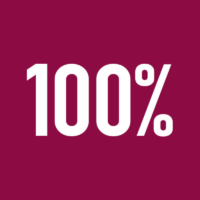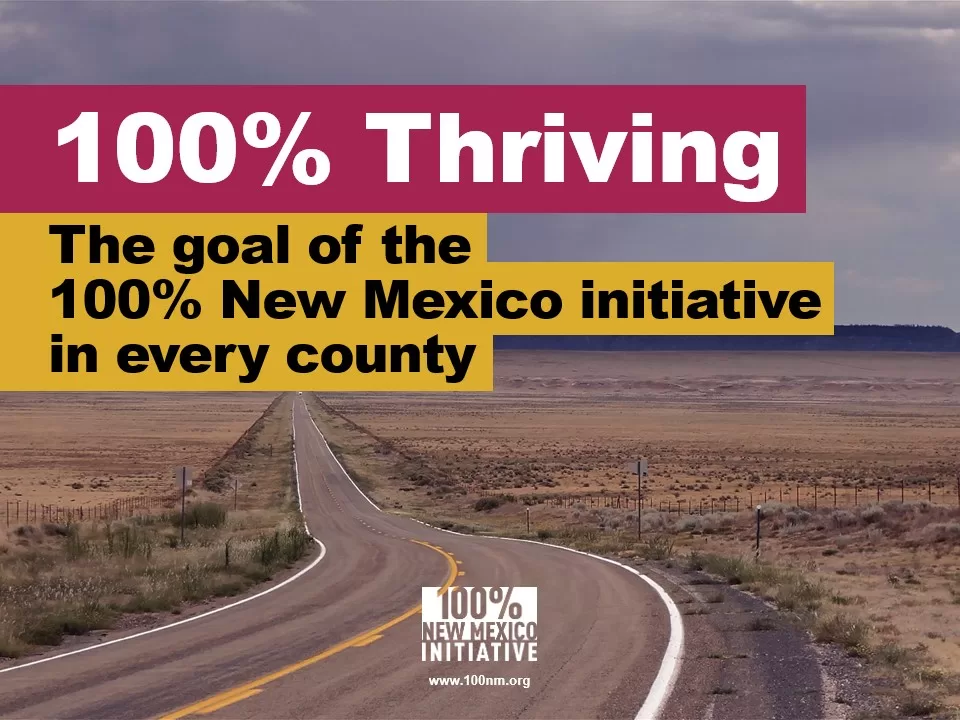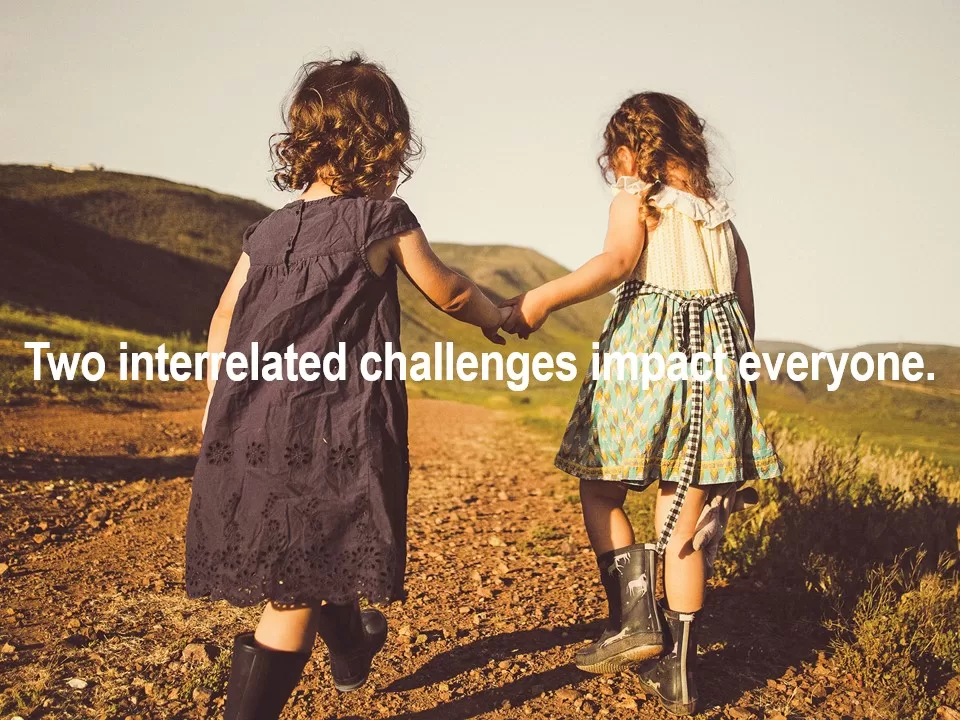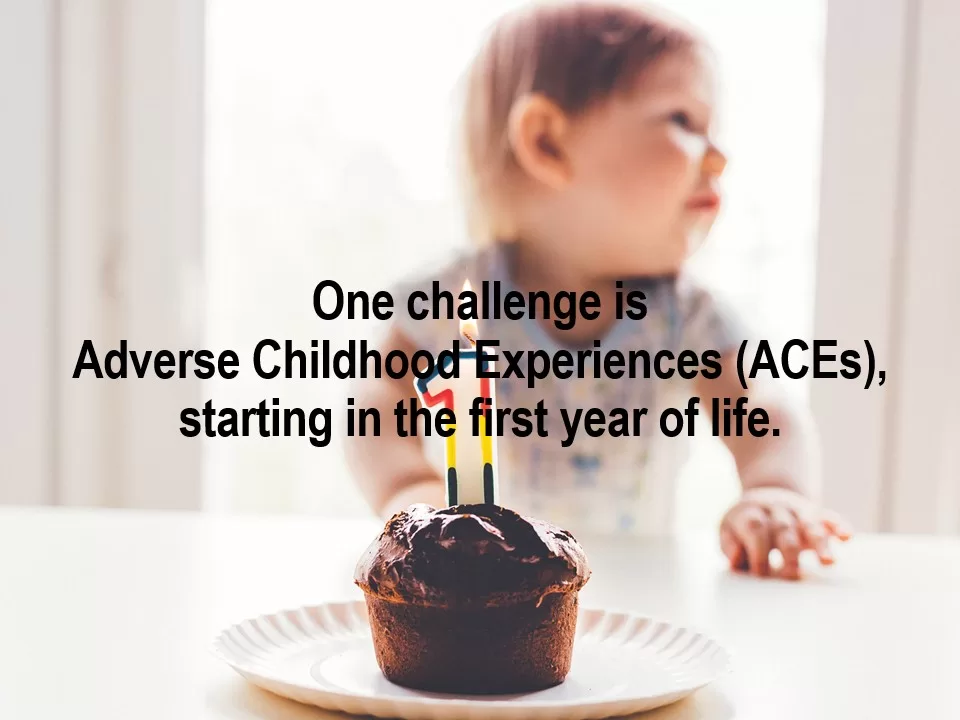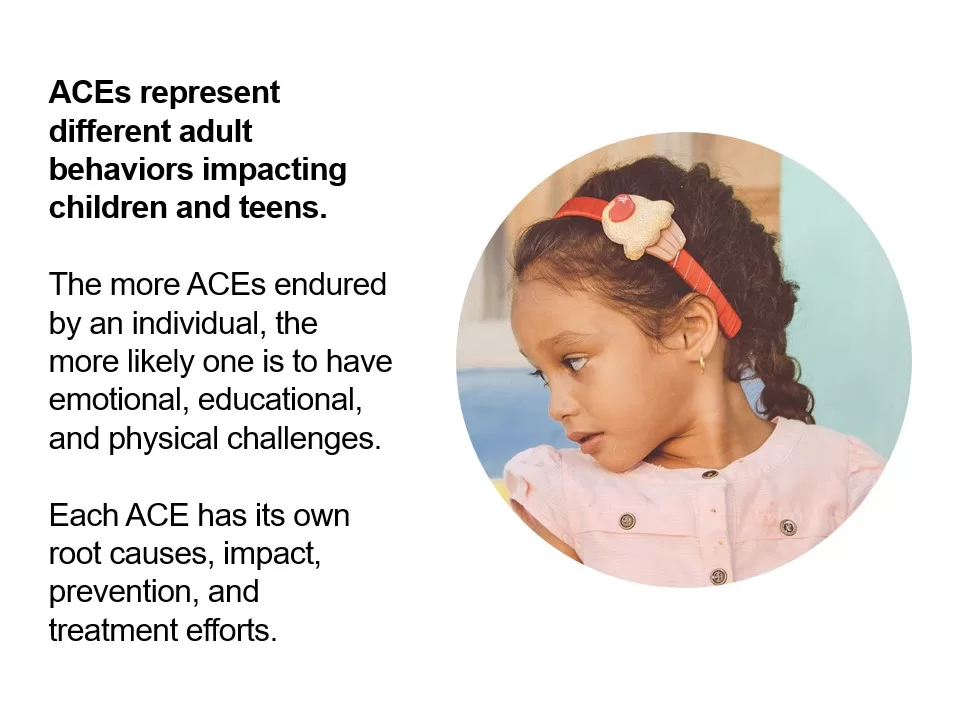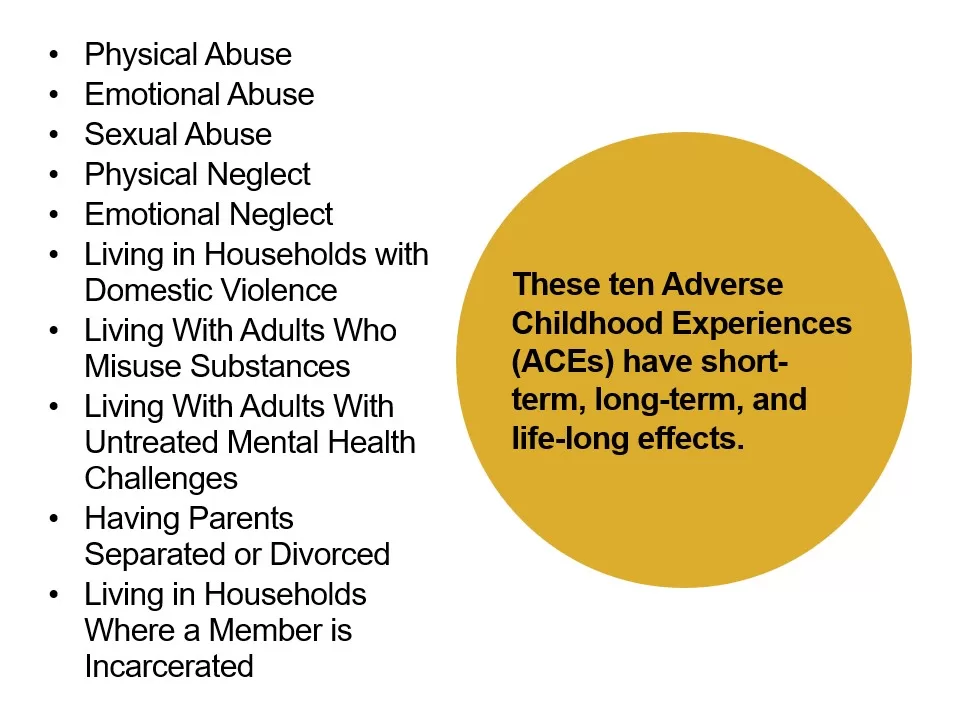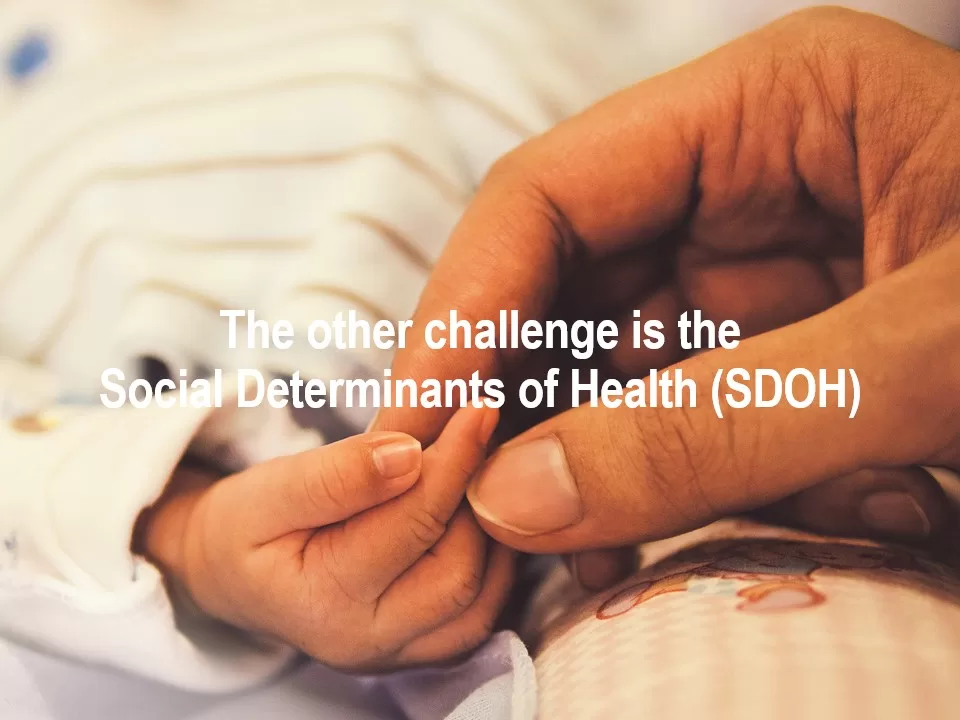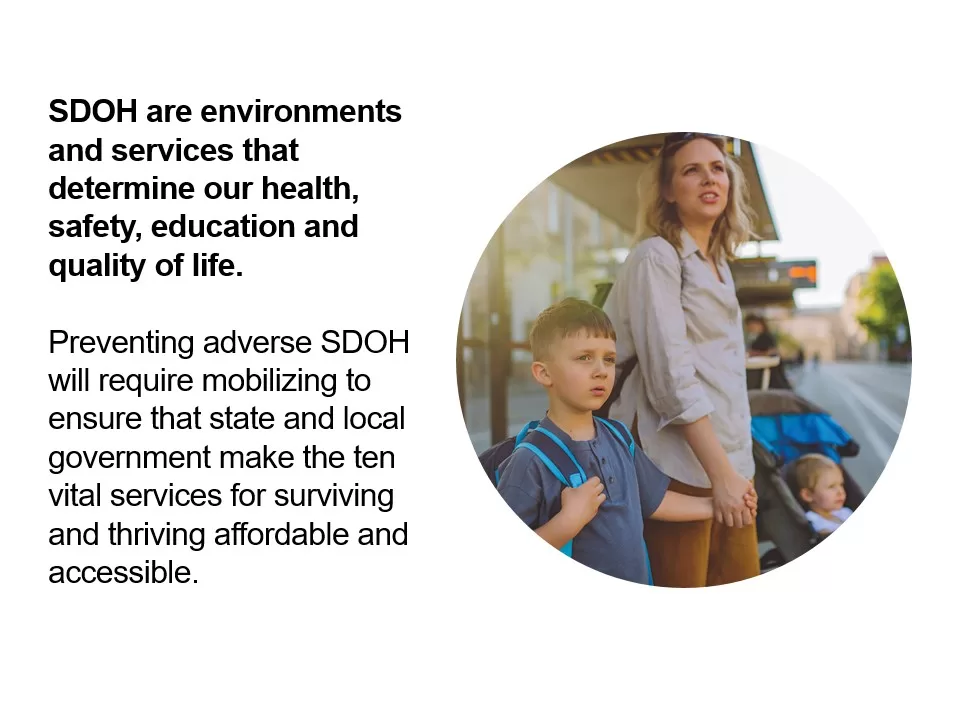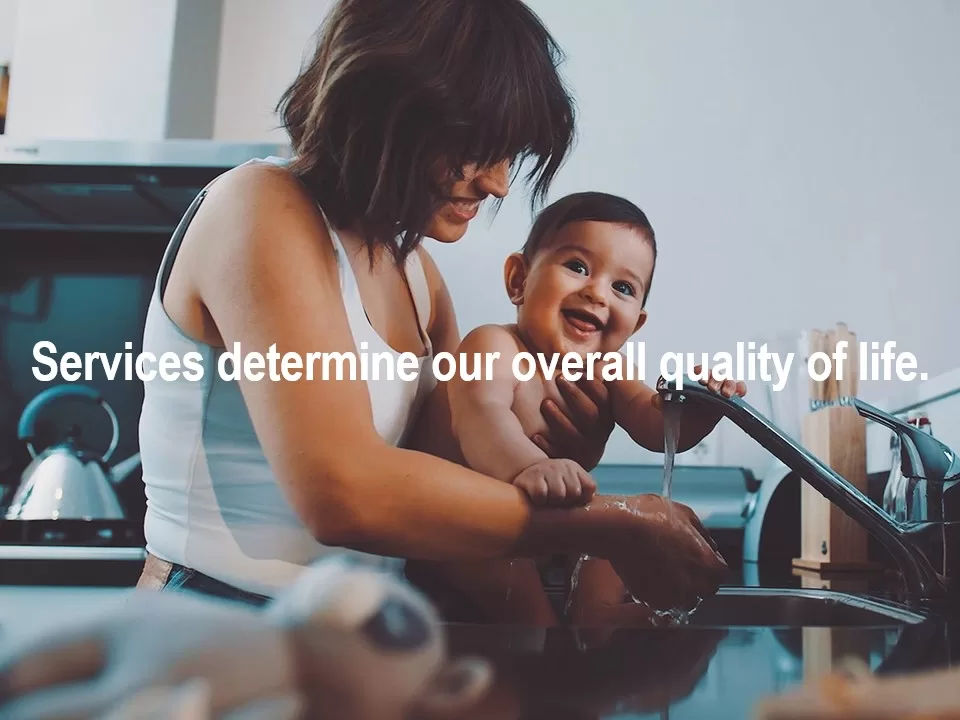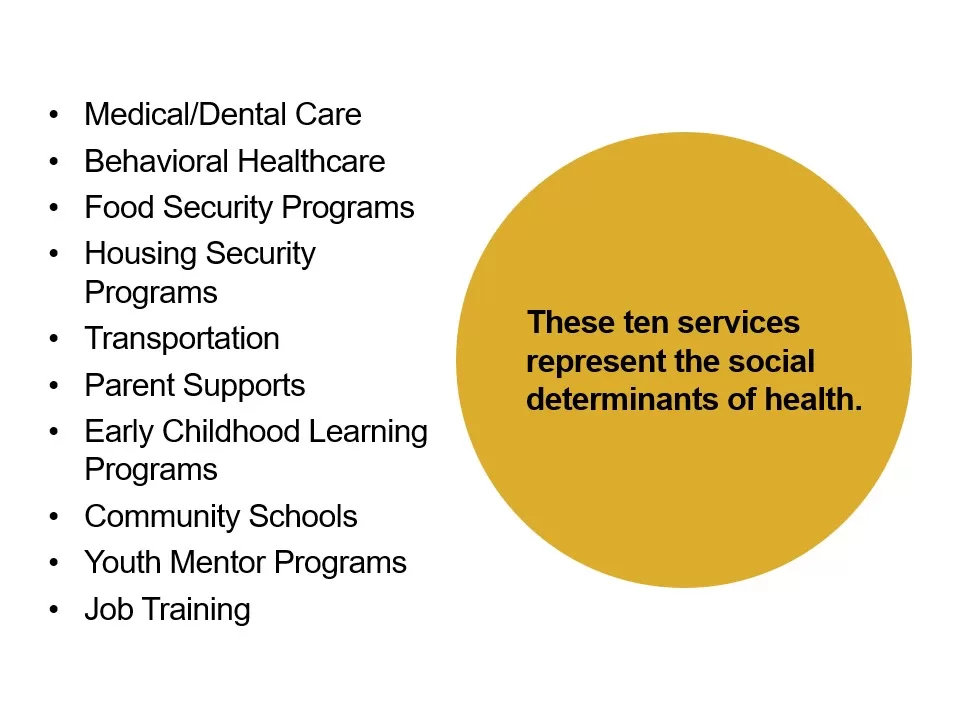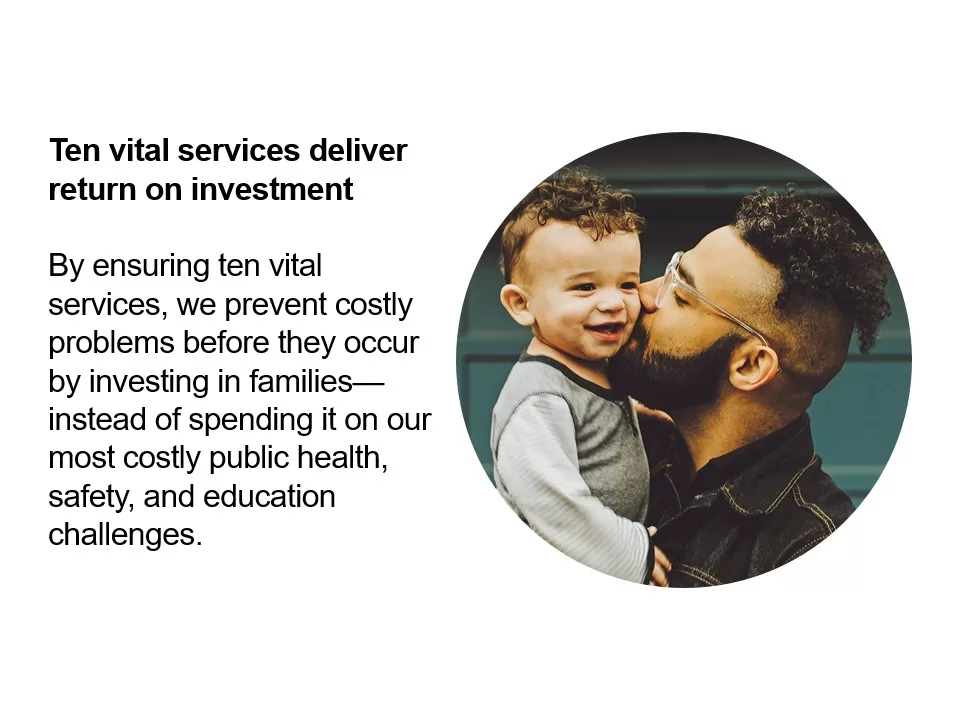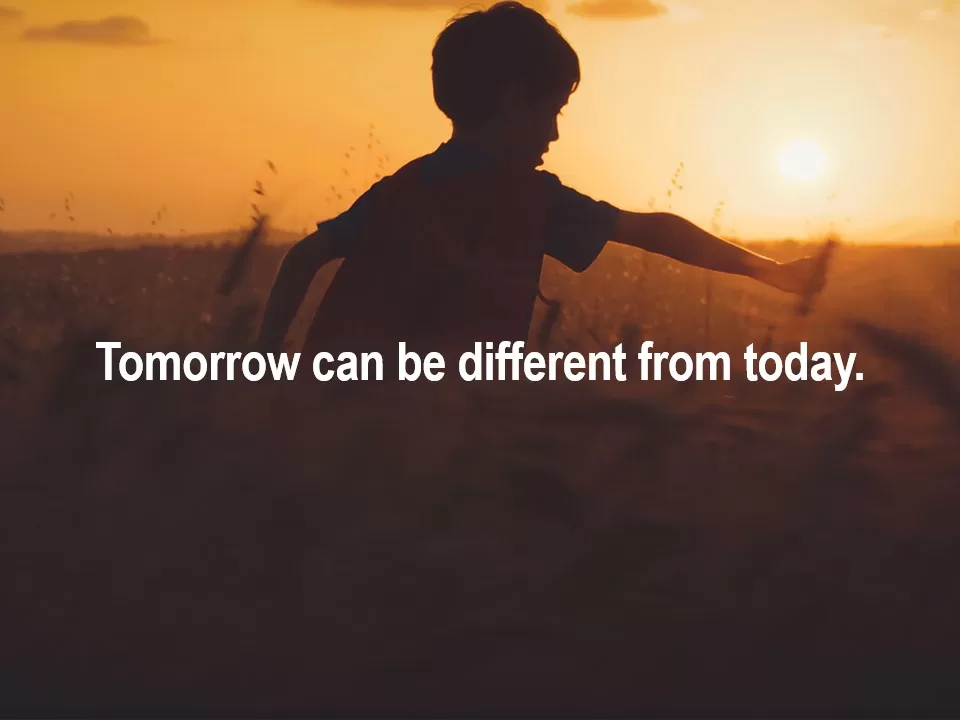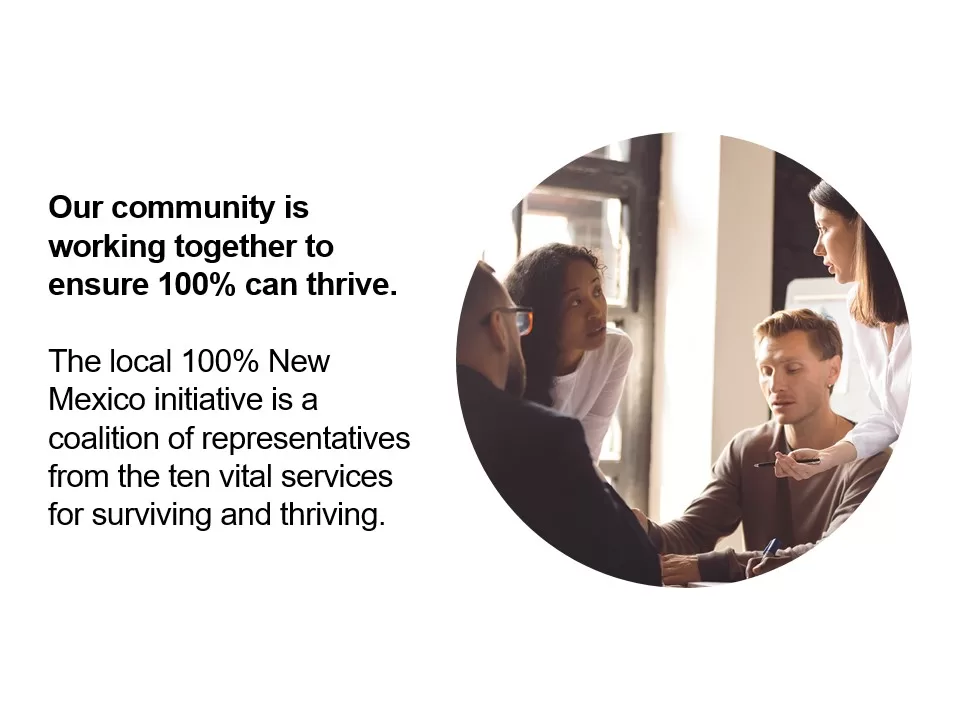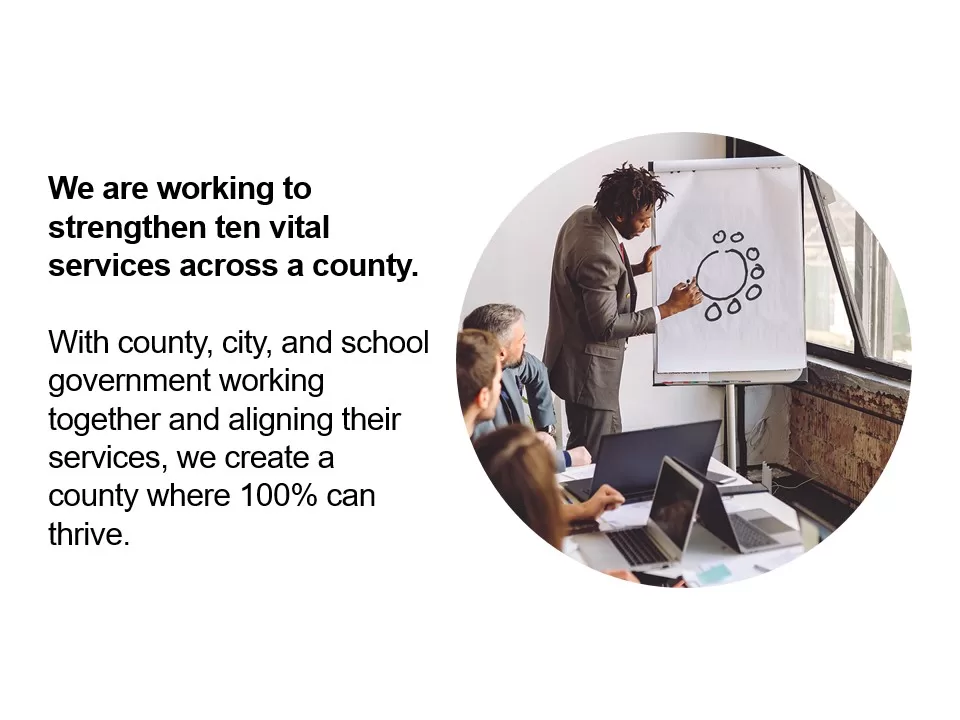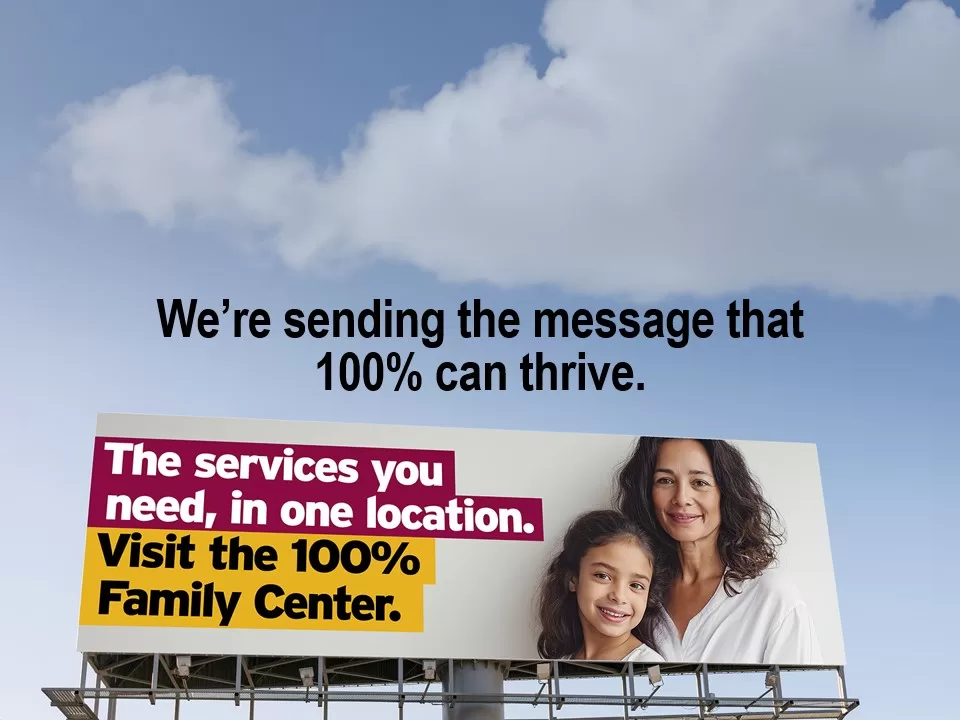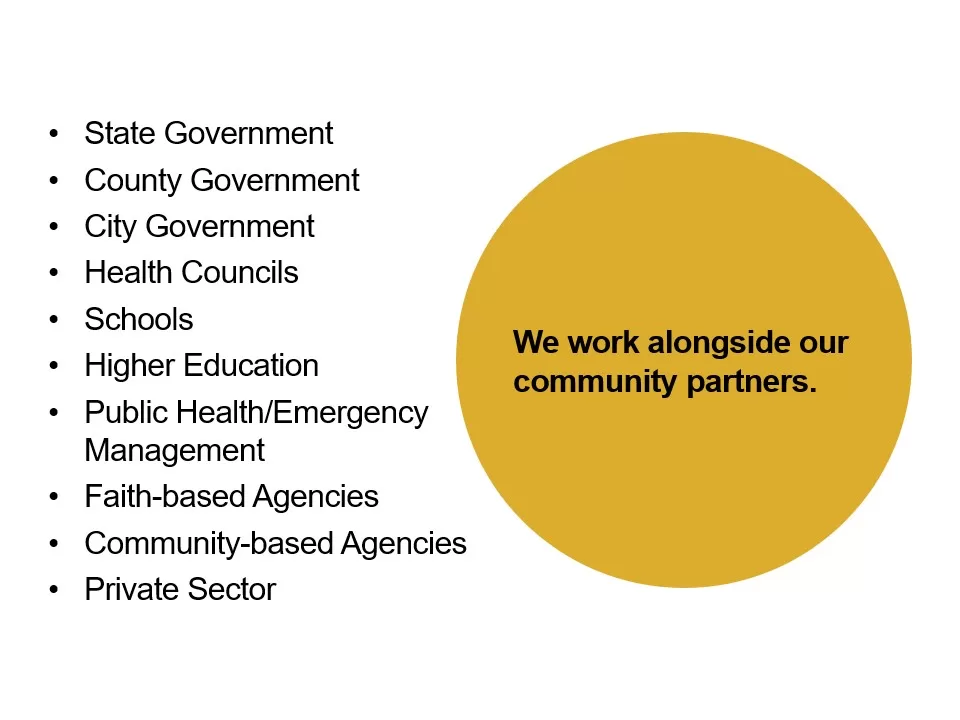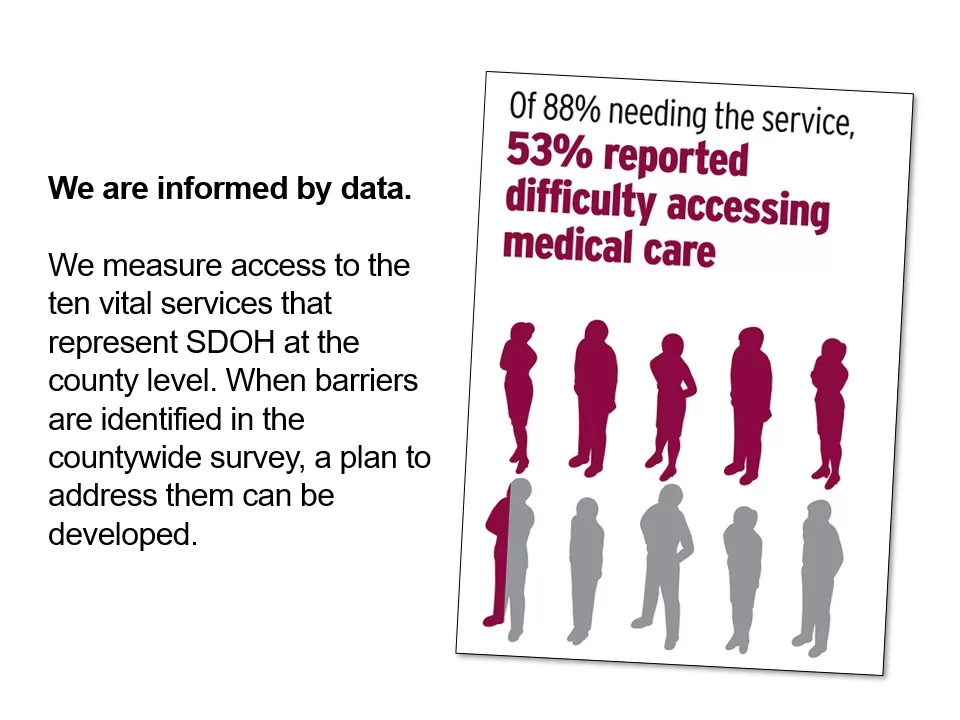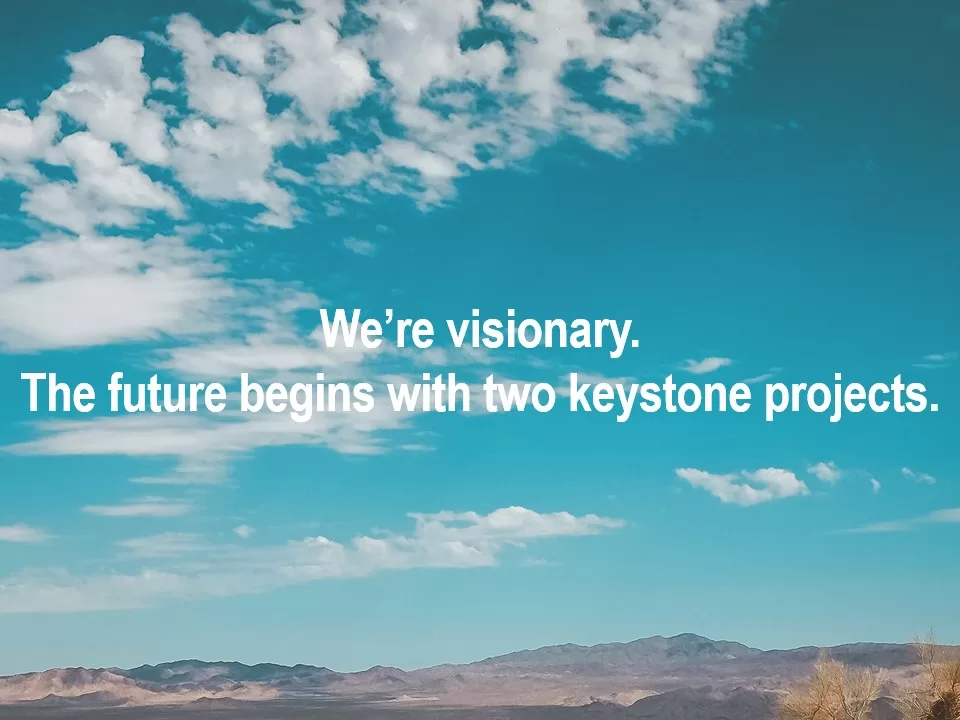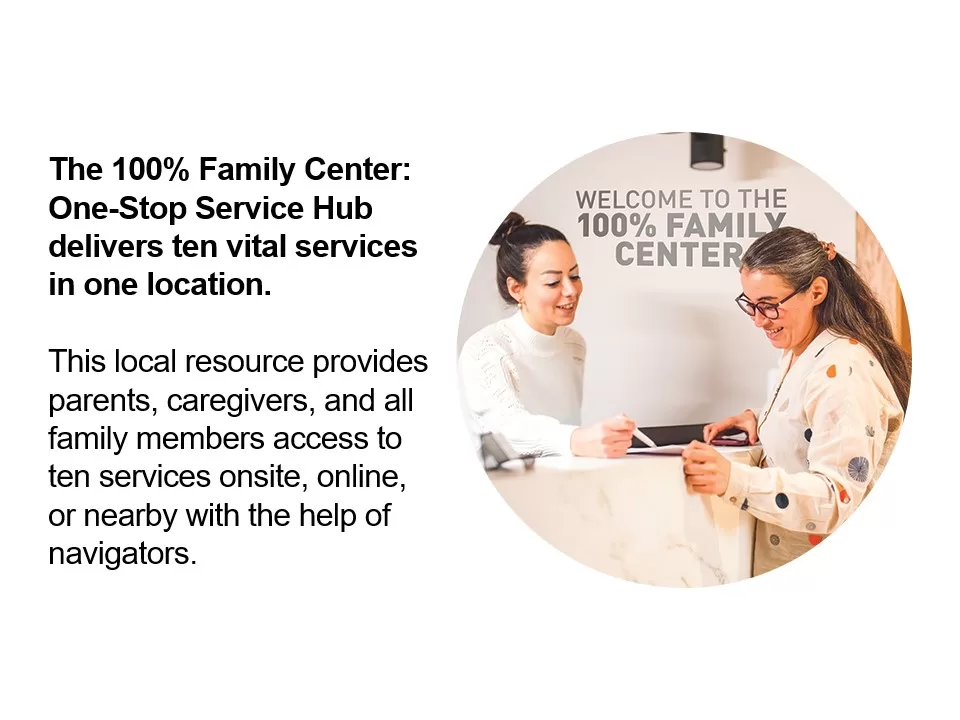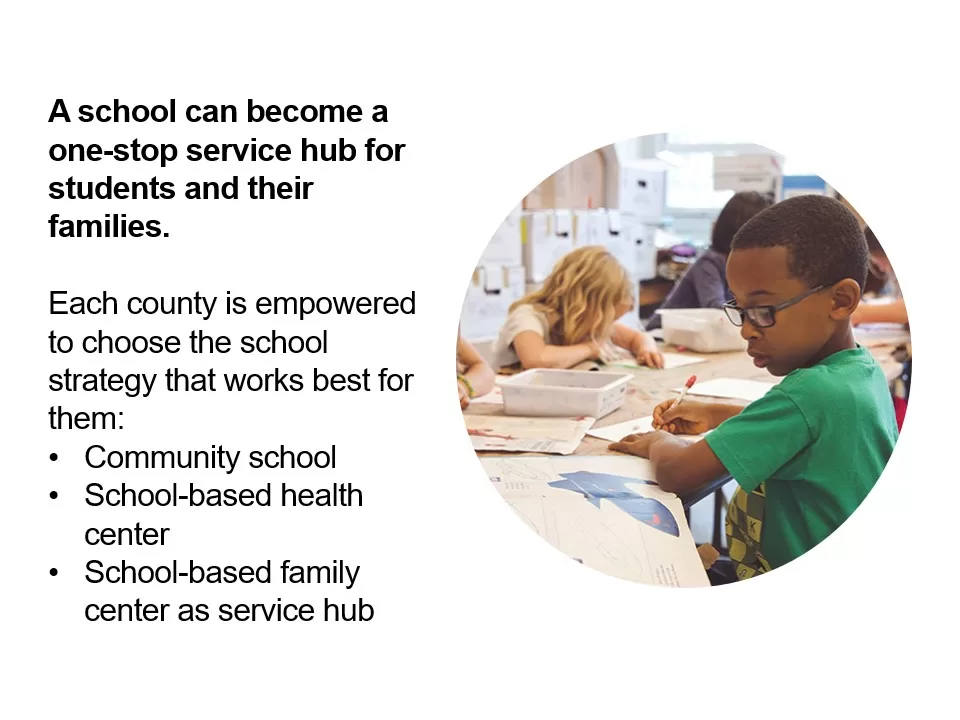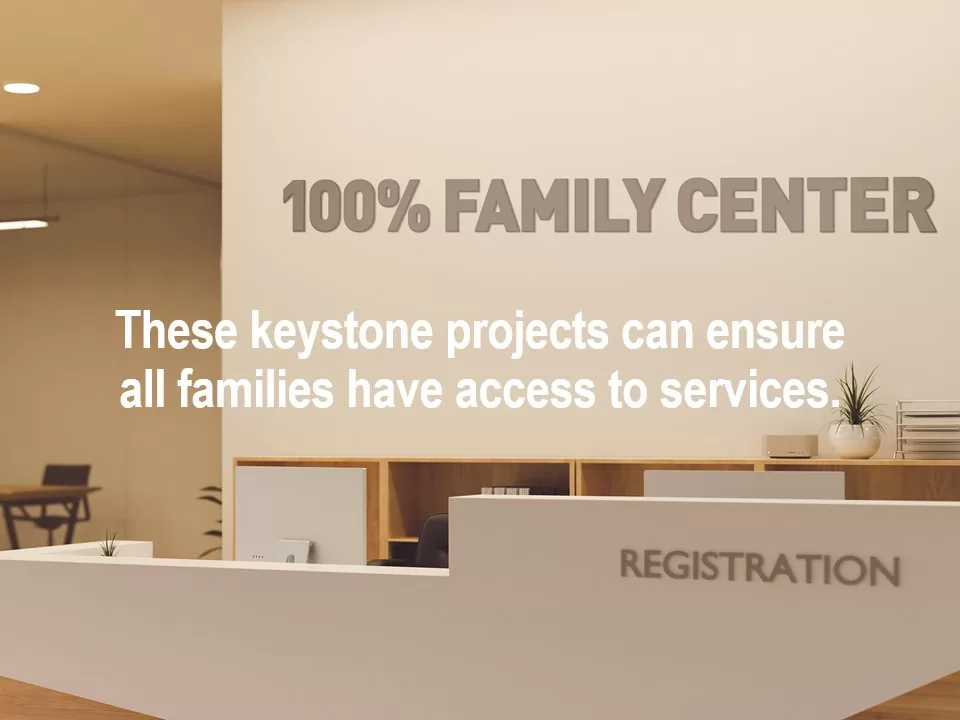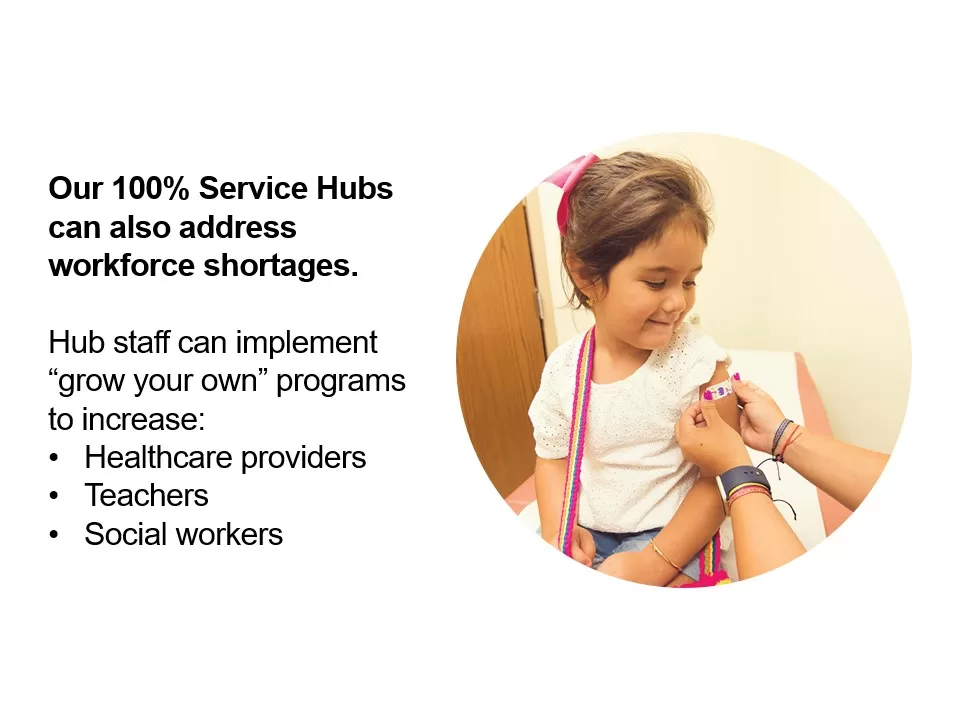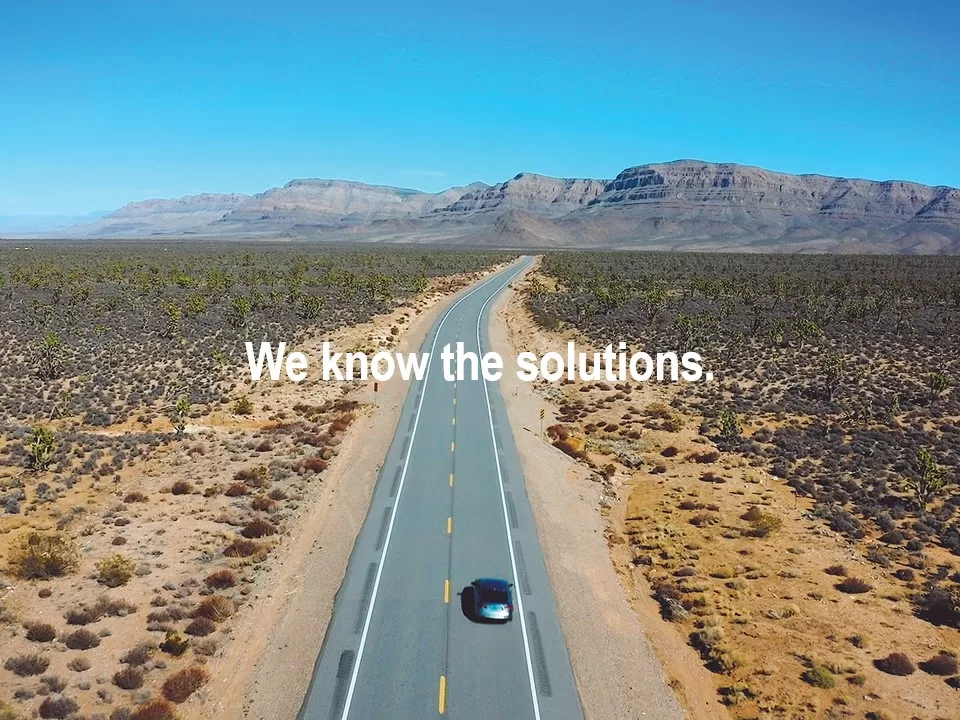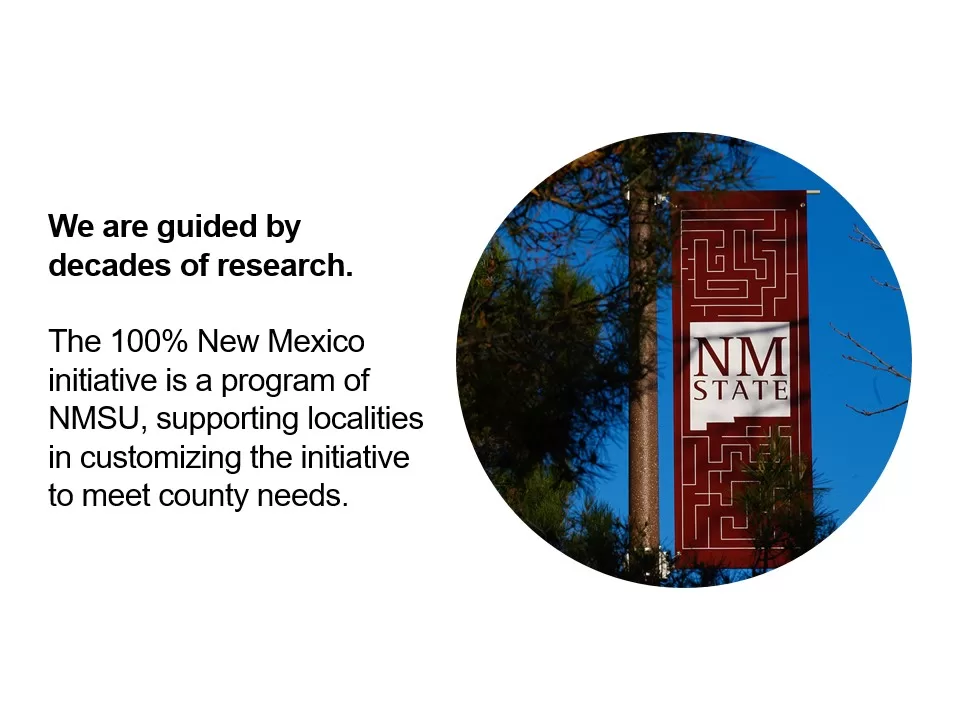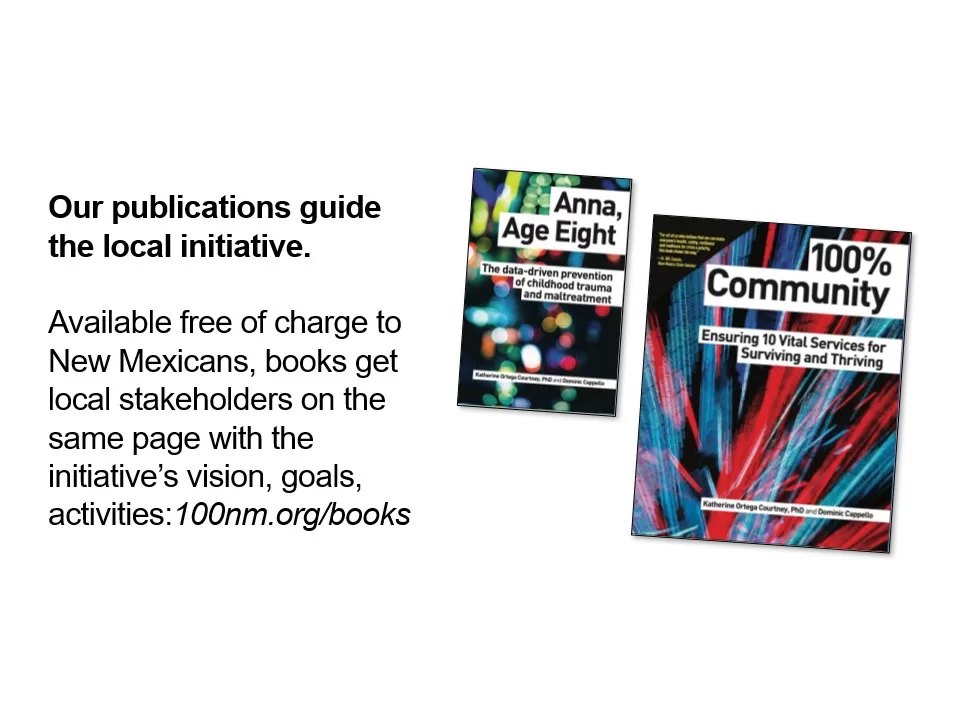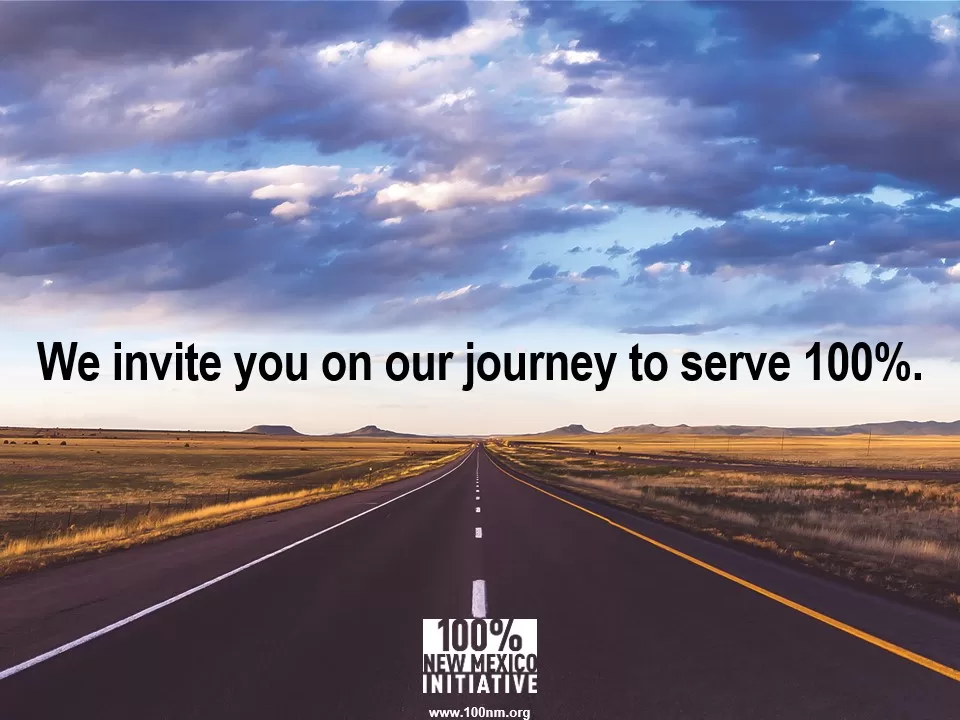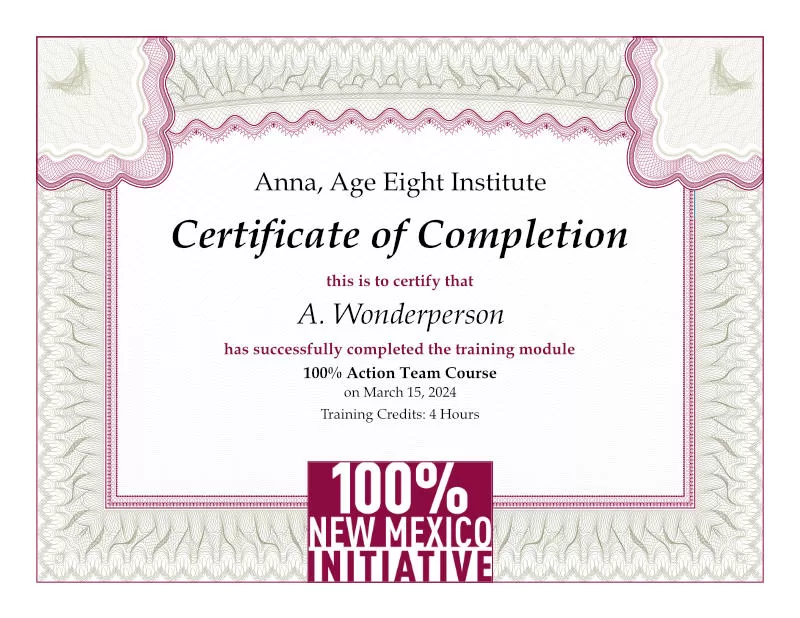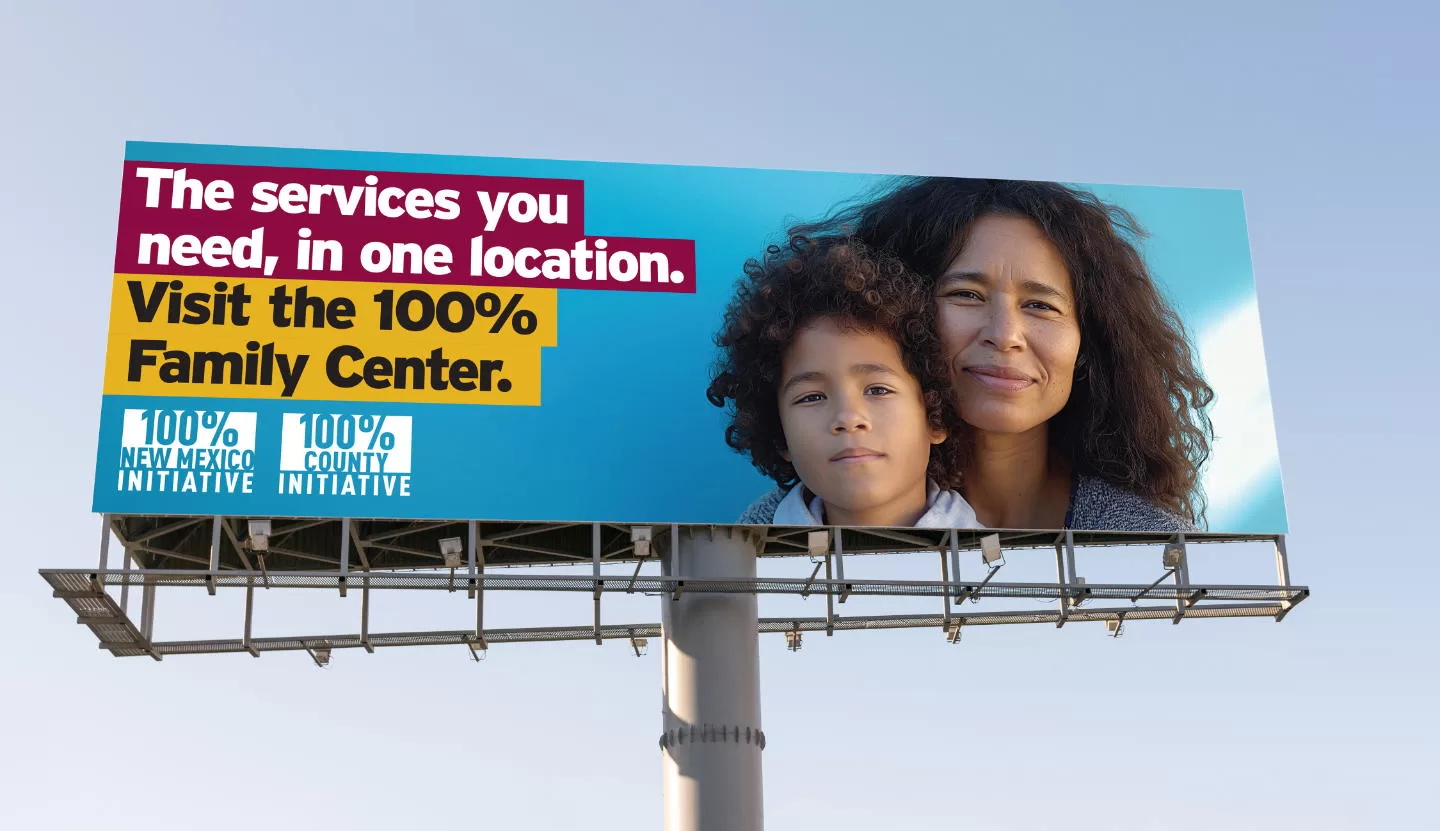
We’re securing buy-in to make the health, safety, and education of 100% of New Mexico’s children and students the number one priority of New Mexico.
Our 100% New Mexico initiative answers a vital question. What percentage of our children should have access to the services to survive and thrive? If you answered 100%, you understand why the 100% New Mexico initiative is urgently needed across every county. Our work of capacity-building and community-building with one-stop service hubs and other strategies ensures vital services await.
In the language of public health, we are transforming the adverse social determinants of health into positive ones. This turns under-resourced areas into fully-resourced communities where all families can access vital services for surviving and thriving. What our 100% New Mexico initiative is doing statewide has never been done before in the US. With the resources of a university behind us, we are supporting each county across the state with the framework for strengthening ten service sectors, including healthcare, education, housing, food, and transportation.
Our choice is stark: Adversity or Empowerment.
The initiative’s seven steps require courage. We are choosing a new way forward to create homes, schools, and communities for all New Mexicans to thrive. With seven steps, bold determination, a shared vision, and a collaborative spirit, the transformation of adverse social determinants of health into positive ones occurs in counties across New Mexico. We know the challenges and how to fix them. All that’s lacking is the buy-in to make 100% of New Mexico’s children and students the number one priority of New Mexico.
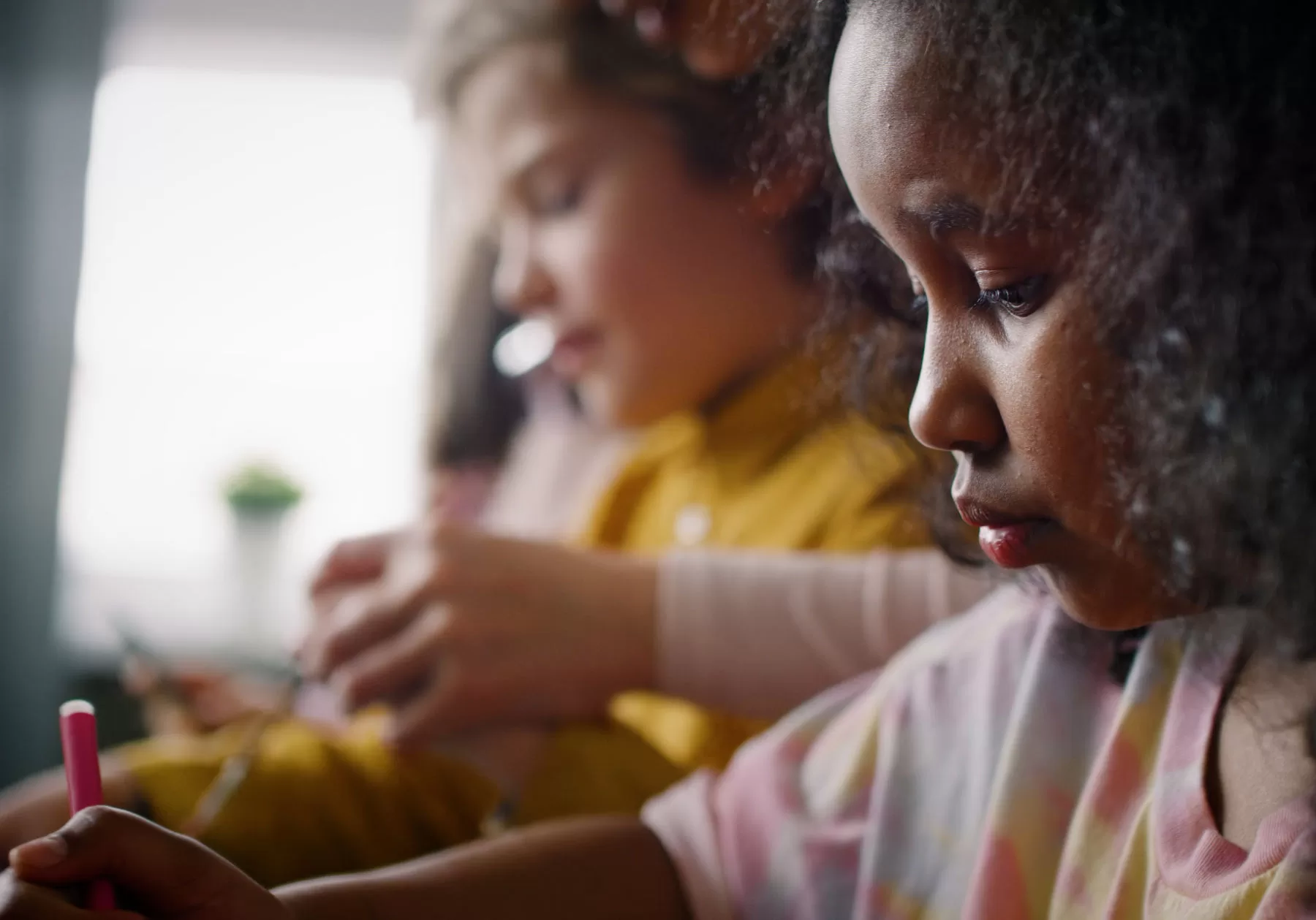
WE HAVE A CUSTOMIZABLE AND CREATIVE STRATEGY.
As we like to remind all our local 100% New Mexico initiative participants and their partners, the seven steps of the county-based initiative are flexible. We have learned that each county has different capacities and ways of approaching large-scale collaborative projects like the local 100% Community initiative. However, to have an effective data-driven process, steps 1, 2, and 3 should happen before step 5.
- Step 1: Survey your county residents (read our current county surveys)
- Step 2: Review survey results and barriers
- Step 3: Assess the providers of ten surviving and thriving services
- Step 4: Ensure that a county directory of ten vital services exists
- Step 5: Identify policies and programs to fix service barriers with one-stop service hubs as a priority
- Step 6: Get buy-in from local government and stakeholders
- Step 7: Evaluate the effectiveness of each project
Step 1: Survey your county residents
County-led 100% New Mexico Initiative teams implement the 100% New Mexico County Survey that assesses residents’ access to 10 vital services for surviving and thriving and what barriers to reaching them exist. You’ll learn that different populations will have different challenges such as cost, applicants not qualifying for help, unfriendly hours (especially for working parents), lack of transportation, services located in areas too far to reach, uncertainty about where to get service, or problems with staff not speaking their language. This is the first survey asking family members directly, “What are the barriers to ten vital services you endure?”
Step 2: Review survey results
100% New Mexico Initiative teams review the 100% New Mexico County Survey Report to learn what percentage of county residents struggle to access vital services, what barriers to accessing services exist, and where they exist in the county. Each action team (ten teams focused on each of the ten vital services) reviews and discusses barriers such as cost, unfriendly hours, and lack of transport to services), leading to plans to remove barriers. This step is critical, as it guides the development of projects that address the barriers identified in the survey. As we review barriers, we must think big, for example, creating new 100% Family Centers and community schools serving as one-stop service hubs.
Step 3: Assess The Ten Surviving And Thriving Services
100% New Mexico Initiative teams start the asset mapping process, learning about their county’s capacity to meet local needs from local services organizations. The goal is to understand the challenges service organizations face when delivering ten vital services. The critical questions in informational interviews with local organizations are, “What’s the capacity of your staff and providers to meet local needs?” and “What support might you need to address challenges like workforce shortages, lack of sustainable funding, or lack of technology to increase overall service delivery and provide both onsite and web-based services?” Those doing the informational interviews will collect information to create an up-to-date services directory. Without this asset mapping project, we stress that it will be impossible for action teams to know why barriers exist within each sector.
Step 4: Ensure That A County Directory Of Ten Vital Services Exists
One of the most common phrases used in the public sector is, “We connect families to services.” This is often said without knowing what services exist. In this step, initiative teams create or update an online directory of ten vital services. A county may not lack a wealth of printed or web-based directories as schools, child welfare, health councils, and local governments often create them. Still, the vital question is: How up-to-date and accurate is the information about services? An initiative team (which might be a contractor) works to identify the services with a sliding fee scale so the barrier of cost does not exist for families. Note that directories will need local monitoring and updating based on service changes due to disruptions caused by public health and economic challenges.
Step 5: Identify Innovative Policies And Programs To Fix Barriers To Accessing Ten Services with one-stop service hubs as a priority
In this step, we arrive at the heart of transforming adverse social determinants (lack of services) into positive health determinants (easy-to-access services in all ten sectors). To address the barriers identified in the countywide survey, our keystone projects, the 100% Family Center: One Stop Service Hub and community schools, can significantly increase access to all services in all ten sectors. These two evidence-informed projects can be the focus of a county initiative, engaging all ten action teams. We can provide you with proposals to review for the 100% Family Center and community schools, including how to secure funding from state, county, and city governments.
Step 6: Get Buy-In From Local Government And Stakeholders
In this step, we identify potential funding sources from state and local governments and build relationships with local and state government lawmakers and leaders. Projects as large as the 100% Family Center: One Stop Service Hub or creating community schools with school-based health centers will require financial support. We know that state and local governments have enough funding for these projects, but they may not see them as a priority. One component of this buy-in step for sustainable funding is building public awareness among lawmakers and all residents. We have found that a practical approach is to start with our book clubs (reading the books Anna, Age Eight and David, Age 14) and launching 100% Mural Projects that bring the art community, public sector leaders, and local elected leaders into the initiative.
Step 7: Evaluate The Effectiveness Of Each Innovation And Measure The Increase In Access To Ten Vital Services
Initiative teams assess the impact of innovative projects to enhance access to ten essential services for survival and well-being, gathering feedback from residents and service providers. Action teams work to ensure that our local efforts on each innovative project are making significant progress in improving access to services, aiming to enable every family to thrive. In this phase, we can assess activities within all ten action teams quarterly. A local initiative can track if projects are being developed, including the two keystone projects, the 100% Family Center: One Stop Service Hub and Community Schools for 100% with school-based health centers. We can provide you with the 100% Quarterly Update to help track progress within each action team. We can also share research briefs that focus on the importance of the work and how evaluation teams capture progress across a county, region, and state.
A CLEAR CHOICE
Our choice is stark: Adversity or Empowerment. These seven steps of the local 100% New Mexico initiative require courage. We are choosing a new way forward to create homes, schools, and communities for all New Mexicans to thrive. With seven steps, bold determination, a shared vision, and a collaborative spirit, the transformation of adverse social determinants of health into positive ones occurs in counties across New Mexico. We know the challenges and how to fix them. All that’s lacking is the buy-in to make 100% of New Mexico’s children and students the number one priority of New Mexico. That buy-in is increasing each day.
Did you know? Our transformational 100% New Mexico initiative is guided by web-based, self-paced courses provided free to all New Mexicans.

